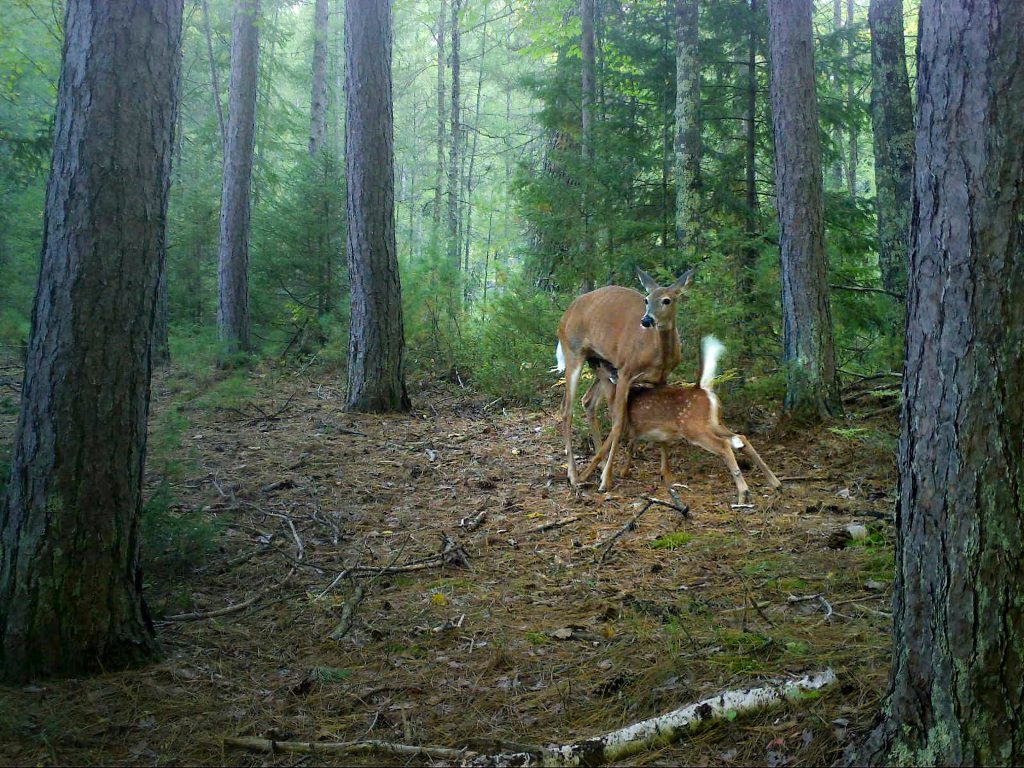Snapshot Wisconsin camera captures nursing fawn at Kemp Natural Resources Station

Anyone who’s been to Kemp Natural Resources Station near Woodruff knows there’s something magical about those 231 acres. Part of the College of Agricultural and Life Sciences’ network of Agricultural Research Stations, Kemp is home to some of the last remnants of old-growth forest in the Great Lakes region and sports more than a mile of pristine shoreline on Tomahawk Lake. The serene property is an ideal setting for forest and wildlife research and education.
One late September photo beautifully captured that aura when a doe and fawn, meandering through the woods, paused to nurse in a small clearing monitored by the station’s Snapshot Wisconsin trail camera. The camera typically spots wildlife foraging or in transit. It has previously captured photos of fishers, black bears, coyotes, bobcats, raccoons, porcupines, turkeys, and even some smaller birds. However, the most abundant fauna (by a wide margin) are deer.
Fawns can be weaned and survive without their mother’s milk by the age of two and a half months, and most are weaned by four months. Fawns typically lose their white spots around three to four months of age, and this fawn’s spots have nearly faded.
Snapshot Wisconsin is a project monitoring wildlife year-round through a network of volunteer-managed trail cameras statewide, capturing images of wildlife from Wisconsin’s diverse landscapes. The photos are then made available online where they are classified by volunteers from around the world. The resulting dataset informs DNR management decisions and broadly helps all of us learn more about Wisconsin’s wildlife. Learn more about the project at the Snapshot Wisconsin website.
View more Kemp Natural Resources Station trail camera photos, learn more about station events, or follow Kemp on Facebook.

